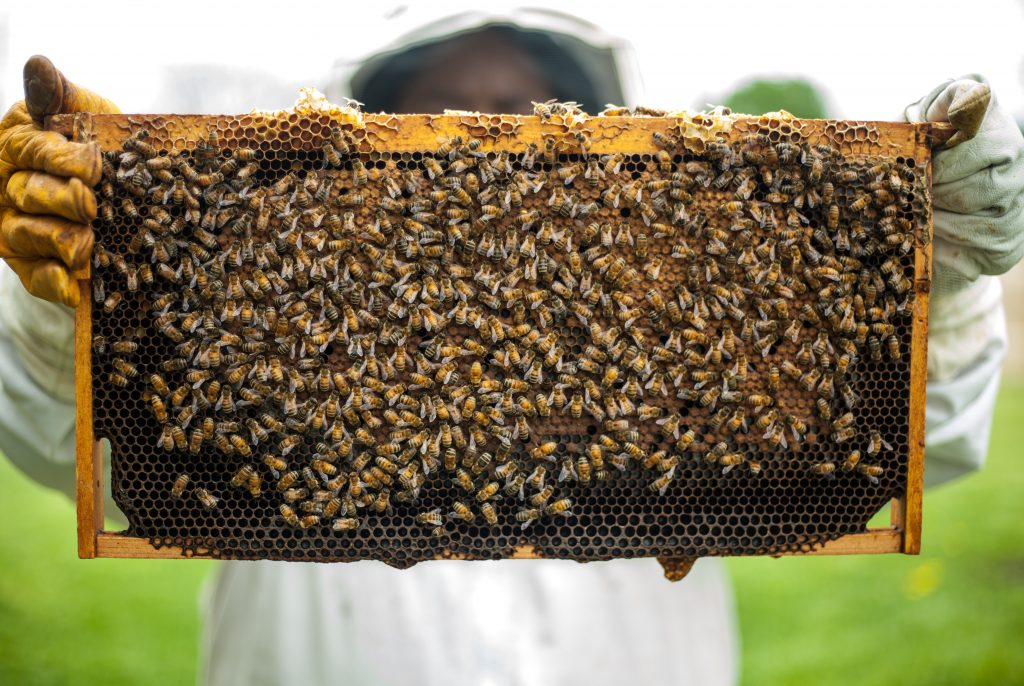Technology might have made beekeeping easier for some people, but specific manual tools remain a standard part of any beekeeping operation. In this article, we round up the must-have tools for people who wish to get started in this occupation.
Basic Equipment
Here is the equipment that beekeepers can’t live without:
Bee Hive Boxes – A hive is where the honeybees live. It is a box-like enclosure with vertical or horizontal structures and has three common types: Langstroth, Top Bar, and Warre. When buying or creating your beehive boxes, remember that it can get intensely hot inside the box during summer. You want to keep the temperature cool by painting the outer box with light colors.
Frames – As with other applications, a frame’s purpose is basically to hold things together. In this occupation, it is used to keep individual combs from falling apart when moving the entire hive structure.
Comb Foundation – A foundation’s purpose is to enhance the entire hive structure’s strength and durability. It’s made of thin sheets of beeswax with hexagon patterns the size of natural brood cells. Essentially, it helps reduce work for the bees when making honey.
Other Hive Equipment
The following equipment aids in catching, mating, and producing honeybees:
Smoker – A smoker is a protective tool that prevents people from being stung by keeping the bees calm. You can purchase a heat shield to protect your clothes from being burnt by the smoker. Liquid smoke, which you can spray towards the hive for protection, can be used as an alternative to this.
Hive Tool – This is a multi-purpose tool that can be used to prize apart propolis or the sticky wax that makes the hive bodies challenging to separate. Many beekeepers also use this to inspect and maintain hives. It is usually a metal bar with a flattened need.
Pollen Trap –A pollen trap works when insects try to enter the hive. Since the pollen trap is attached to the entrance, the creatures will be trapped as they try to pass through it. This tool is a must for beekeepers who wish to sell surplus pollen.
Feeders – At some point, beekeepers will have to feed or medicate the bees with sugar syrup. Feeders are kept in the hive to keep other insects from snatching the food.
Queen Catcher – As the name implies, a queen catcher separates the queen from the rest and keeps them safe while you’re going through the hives.
Queen Excluder – After catching the queen, you want to confine them in an excluder. This tool comes in handy when queen-rearing, forming multi-queen colonies, or producing royal jelly.
Protective Clothing
Beekeepers wear the following protective clothing to avoid getting stung by bees:
Bee Veil – A veil protects sensitive parts of your face, such as the nose and eyes. When buying a veil, pick a black screen for the best visibility. However, the rest of the veil should be light in color to keep the temperature cool.
Bee Suit – Suits often come in white, although there’s no specific design for this protective clothing. You want a light-colored suit for the same reason you want a light-colored veil. Picking cotton as the material also adds to the coolness of the suit.
Must-have Tools for Newbies
These tools are often used by beginners who are still getting used to the entire beekeeping process:
Essential Oils – If you want extra protection to drive away beetles while attracting bees, you want to use essential oils, such as lemongrass and lavender.
Bee Brush – A brush is used to scrape bees off combs and harvest frames. For more experienced beekeepers, a handful of grass or leaves would suffice in such operation.
Queen Marker – Spotting the queen can be extra tricky for beginners, that’s why some use a marker.
As a final word, note that the higher the quality of your equipment, the more efficient you become on the field and the better protection you get from stings and injuries.

